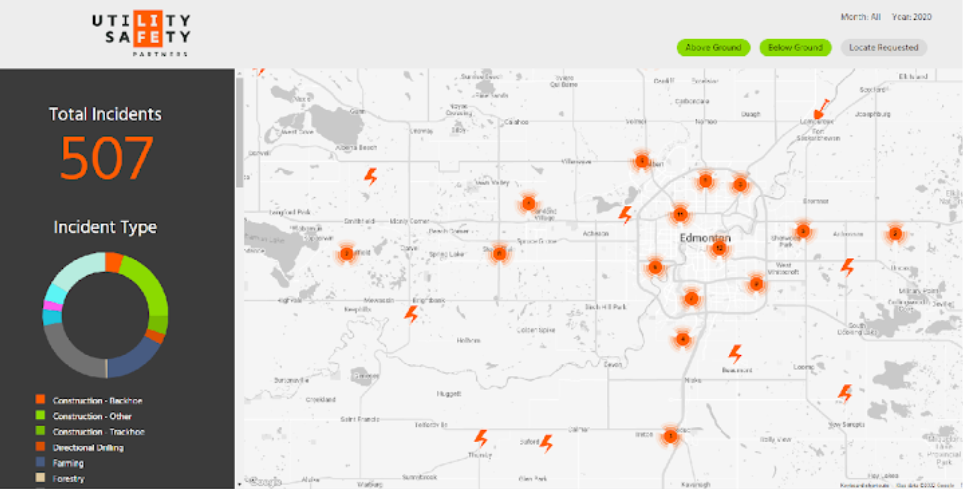
Damage Information Reporting Tool: Changing Lagging to Leading Indicators through positive tracking and engagement
Business Leaders and Safety Professionals are acutely aware of the difficulties industries face trying to reduce damages and injuries. How do we improve our trend analysis in order to influence the continuous improvement of activities and actions that have negative consequences on the public, on the worker, the supervisor and the employer?
Now USP has commenced the tracking and reporting of incidents in a map-based interface, data that is provided by safety-focused companies involved in ground disturbance and damage prevention practices including overhead powerlines across Alberta.
This is a huge step forward for all members and will provide lagging indicators (geographic identification) of incidents which will enable safety professionals to better focus educational efforts on geographically identified locations needing further safety and awareness training. We can improve performance and still reduce costs.
In order to identify where focus is needed, safety professionals use terms that include leading and lagging indicators. The Cambridge dictionary defines leading and lagging indicators as follows:
LEADING INDICATOR: something that shows what a situation will be like in the future rather than showing what it is like now or has been like in previous weeks, months, etc.
LAGGING INDICATOR: something that shows what a situation has been like in previous weeks, months, etc., rather than showing what it is like now or will be like in the future.
Now we will be able to see geographically where incidents are taking place (Lagging). Our next step is to change these negative outcomes into positive results by better focusing safety training efforts on staff in areas that have recently experienced some incidents, turning lagging into leading indicators going forward.
Critical to this shift forwards, each USP member company needs to implement and reinforce the importance of damage reporting (online, simple format DIRT) to optimize the analysis and the resultant training support required to move forward into "what is required now to correct any incident shortfalls and will be improving overall safety performance over time”.
According to the Internal Responsibility System, "Everyone is responsible for Safety”. Now Utility Safety Partners is providing the data collection tool we need to embrace to make this a reality. Near misses are arguably more important today than ever before. Let’s not have another incident that we should have prevented.
 |
Contact the Education and Awareness Committee by emailing info@utilitysafety.ca
Education and Awareness Committee